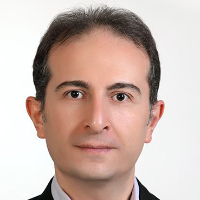Comparison of drying method (Convective hot air, Microwave, Convective-microwave, Microwave-convective) on drying kinetic of broccoli foam
The broccoli is a vegetable that belongs to family of Cruciferae and genus Brassica. It is a rich source of minerals such as potassium, phosphorus, calcium and sodium. Additionally, broccoli provides vitamins, especially vitamin C, vitamin A and folic acid. Also it has been reported as the one of main sources of natural antioxidants such as phenolic compounds, glucosinolates and isothiocyanates. Because of the high corruptibility of broccoli, it is very important to prevent broccoli from corruption to keep its effective components as much as possible. Drying is the most common method for enhance shelf life of food products. The foam mat drying method was developed in the 1960s. This method involves mixing pulp or fruit and vegetable juices with a foaming agent and a foam stabilizer to prepare a stable foam that is spread and dried on a tray, then the dried product is ground to a powdered product. In this technique, due to increasing of the material area, the drying rate is high. Convective hot air is generally chosen as the drying medium of the foam mat method. The disadvantage of this drying method is the poor heat transfer of the air around the foam. Microwave heating, with its ability to produce volumetric heat inside the material, can overcome this limitation. Microwave energy can penetrate directly into the foamed pulp to evaporate moisture inside the foam; continuously generated vapors stimulate foam bubbles, which expand the evaporation level and speed up the drying process even more. There are many strategies to improve the quality of microwave-dried products, such as combining microwave and convective hot air, intermittent drying, and microwave -vacuum drying. The combination of microwave and convective hot air has been used successfully for a number of agricultural products such as garlic, grapes, carrots, kiwis and blueberries. The combination of these two methods has a shorter drying time than single convective hot air, and the final sample will have higher quality.
Broccoli was purchased from the local market of Tabriz and its enzymes were inactivated by blanching. It was then pulped and stored in a freezer at minus 18°C. 3% (w/w) egg white as foaming agent and 0.5% (w/w) methyl cellulose as stabilizer agent were used to prepare the foam. Foam, with a thickness of 5 mm, was dried with different drying methods including convective hot air (at 40°C and air velocity of 1m/s), microwave (90w) and combination of microwave and convection as pre and post treatment (MW-CHA and CHA-MW) until it reached a constant weight. The moisture content of samples was measured at 10-min intervals (in CHA method) and at 2-min intervals (in MW method), and the drying process was terminated when moisture content of the samples reached 0.04 g water/g dry solids. The produced powders were then scratched off by a special spatula and were immediately ground in a crucible in order to prevent further moisture absorption.
The combination of microwave and convective hot air (in both pre and post treatment) compared to microwave method, had lower effective moisture diffusivity coefficient and drying rate but higher energy consumption. The average of moisture content and moisture ratio was also affected by drying method and the combination of microwave and convective hot air (MW-CHA and CHA-MW). In MW-CHA, the average of moisture content and moisture ratio was higher than MW and CHA drying method, but in CHA-MW, the average of moisture content and the moisture ratio was the lowest obtained.
According to the least energy consumption, drying time, moisture content and the moisture ratio and most effective moisture diffusivity coefficient and drying rate, MW and CHA-MW were the optimum methods for drying the broccoli foam (with 0.88 and 0.7 desirability, respectively).
The combination of microwave and convective hot air (in both pre and post treatment) compared to microwave method, had lower effective moisture diffusivity coefficient and drying rate but higher energy consumption. The average of moisture content and moisture ratio was also affected by drying method and the combination of microwave and convective hot air (MW-CHA and CHA-MW). In MW-CHA, the average of moisture content and moisture ratio was higher than MW and CHA drying method, but in CHA-MW, the average of moisture content and the moisture ratio was the lowest obtained.
According to the least energy consumption, drying time, moisture content and the moisture ratio and most effective moisture diffusivity coefficient and drying rate, MW and CHA-MW were the optimum methods for drying the broccoli foam (with 0.88 and 0.7 desirability, respectively).
Broccoli , convection , Foam mat , Hot air , microwave
- حق عضویت دریافتی صرف حمایت از نشریات عضو و نگهداری، تکمیل و توسعه مگیران میشود.
- پرداخت حق اشتراک و دانلود مقالات اجازه بازنشر آن در سایر رسانههای چاپی و دیجیتال را به کاربر نمیدهد.




